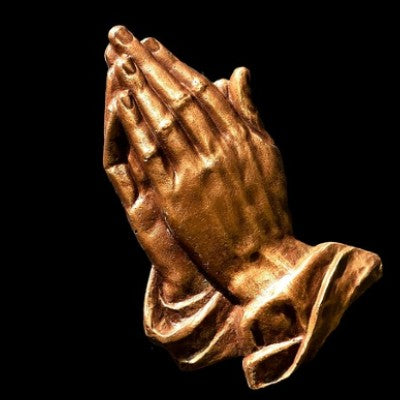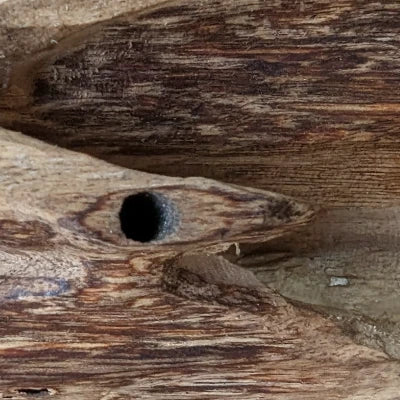Menu
-
-
F.A.Q
- How to identify genuine agarwood chip, natural or cultivated
- How to identify oil injection / absorption fake agarwood beads
- How to know if there are more than one oil in your oil
- How to make your wood bracelet or mala darker
- How to tell if an Agarwood bead sinks WITHOUT sinking it under water?
- How does back flow incense work and how do you burn it?
- Where to start if you don't know what agarwood is ?
- Why are you losing money if you buy seeds and plants?
- Which agarwood incense should I choose?
- Frequently Asked Questions
- Agarwood Related Articles
- Shipping
-
SHOP - Agarwood
-
SHOP - Other Fragrant Wood
-
SHOP - Incense Holder and Burner
-
- FREE guide book
- Testimonials
- "Why did you buy this?"
- Contact us
- About Us
- +61430284329
- Login
-
English


How do mala beads help you spiritually?
June 11, 2022 6 min read
Table of Contents:[hide]
Why do we pray?
The act of attempting to communicate with a god or gods, or other supernatural powers, is known as prayer. Prayer may be done individually or in groups in most faiths and comes in many forms.
While prayers have many different forms and styles, some are more ritualistic than others. Some aim to connect the human with the divine, while others seek to bring out the God within.

A variety of methods and devices may be used to pray. Rosaries and prayer beads are used by a number of religions as memory aids for remembering a sequence of prayers.
Prayers have a number of uses. People often praise the gods for their great power and other purposes. Making particular requests for material or spiritual benefits, either for oneself or for others, is known as petitioning. Thanksgiving is the time when we express gratitude for the good things in our lives. Confession is when we admit to doing bad things and ask for forgiveness.
A very particular form of prayer aims at mystical union with the divine. This form of prayer, also known as meditation, involves techniques such as concentration, contemplation, and abstraction. In the Christian mystical tradition, the mystical union is described as ecstasy or the divine vision. There is a similar tradition in Islam, known as Sufism. Sufism is a type of Islamic mysticism (a belief that each human being can unite with God) helps Muslims get closer to Allah. This is done through personal experience with God.
Prayer is not only about words. It can also be expressed through music, art, dance, and other forms of creative expression.
Prayer is an important part of many people's lives. It can provide comfort in difficult times, offer guidance in making decisions, and help us to develop our relationship with the divine.
In Hinduism and Buddhism, meditation techniques often involve yoga. The aim is to liberate oneself from worldly attachment and so from suffering and thus achieve enlightenment—release from the cycle of birth, death, and rebirth.
The use of 108 mala beads in Buddhism
In Buddhism, 108 is a sacred number that is used in many different ways. For example, there are 108 beads on a mala, which is used for counting mantras during meditation. There are also 108 stupas at Bagan in Myanmar, and 108 temples at Angkor Wat in Cambodia.
In addition, the Chinese Buddhist canon consists of 1,084 volumes, which are said to represent the 1,008 Buddha incarnations plus the 84,000 Dharma teachings.
The number 108 is also significant in astrology, as there are 12 houses and 9 planets in the solar system. 12 x 9 = 108. In addition, there are 108 yantras (sacred geometric diagrams) in the Sri Yantra, which is used for meditation and worship in the Hindu tradition.
The use of 108 japamala in Buddhism is a practice that helps to focus the mind and count each repetition of a mantra or breath.
There are different ways to pray with japamala. Some people may choose to hold the beads in their hands and focus on their breath, while others may recite a mantra or prayer. Others may simply sit in silence and let the energy of the beads work for them. However you choose to pray with japamala, the important thing is to be present and open to whatever comes up for you.
The significance of 108 in Hinduism and Buddhism
The number 108 is considered sacred in both Hinduism and Buddhism. In Hinduism, it is said to represent the 108 energy centres in the body, while in Buddhism it is said to represent the 108 auspicious signs of the Buddha. In both traditions, the number is used in a variety of ways, such as counting mantras during meditation or reciting prayers.
According to Rathod M, the number of 108 has some important attributes in Hinduism. For example
- The diameter of the Sun is 108 times that of Earth (Smith E NA)
- The nine planets used in Vedic astrology are the Sun, Moon, Mars, Mercury, Jupiter, Venus, Saturn, North node Rahu, and South node Ketu (also known as the nava grahas). The 12 signs of the zodiac are Aries through Pisces (nava = "sign" or "constellation").
- There are 27 constellations in Vedic astrology, known as nakshatras. They can all be found in a specific direction (North, South, East, or West). 108 is the result of dividing 27 by four.
- Vedaastrology is a lunar-based system. The Moon is associated with silver. Silver has an atomic weight of close to 108 (Periodic table)
- The Upanishads are an ancient collection of Sanskrit texts. The name “Upanishads” comes from the Sanskrit words upa meaning "near" and nishad, which means "to sit." These works discuss the Vedas. According to most authorities, there are 108 Upanishads.
- Many Indian deities have 108 names.
- Marma points are energy centres in the Sri Yantra where three tracks meet. There are 54 of these intersections. Each junction is characterized by a male and female aspect (known as Shiva, and Shakti). 108 is the product of 54 divided by two. The Sri Yantra is said to represent the universe as well as the human body.
The use of 108 mala beads in yoga
The use of 108 mala beads in yoga is a practice that helps to focus the mind and count each repetition of a mantra or breath. It is said that there are 108 energy lines that converge to form the heart chakra. Mala beads can be used as a tool to help balance and open the chakra
The number 108 is considered sacred in many Eastern religions and philosophies, such as Hinduism, Buddhism, and Jainism. In the yogic tradition, there are 108 pīṭhās (sacred sites), 108 Upanishads (sacred texts), and 108 marma points (pressure points).
Some people choose to use mala beads with 27 beads, which is one-fourth of 108, or 21 beads, which is one-fifth of 108. These numbers have sacred significance in the yogic tradition as well.
The use of mala beads is not limited to yoga and meditation. Mala beads can be worn as a necklace or bracelet as a reminder to stay present and mindful throughout the day.
How to use 108 mala beads in your daily life
You can wear it as a necklace or wrap it around your wrist as a bracelet.
You can also put it in your pocket.
You can hold it in your hand while you are walking or doing other activities.
If you are reciting a mantra, you can use it to keep track of the number of times you have recited the mantra. Each round contains 108 times. When you reach the Guru (Mother) bead, you have completed 108 times of your actions. It could be your breathing, your chanting, or your mantras.
Here is one of many different ways to use 108-mala.
- Find a quiet place and sit down
- Hold your mala with one hand. If you have a large 108 mala, use both hands to hold it.

- Let the mala lay gently over your index fingers.
- Find the bead next to the guru bead, and put your thumb on top.
- Start at the bead next to the guru bead. Place your thumb on the bead and gently press down. Your thumb is now on the next bead. You can inhale and exhale. You can chant or recite a mantra.

- Then you move next to the next bead. It will be an anti-clockwise movement until you reach the Guru bead.
- You have completed 108 breathes, or reciting, or chanting.
- To do another round, you can turn the mala around and start again. Many people believe that the Guru bead is holy, we should not press our thumb again it.
We make 108 Agarwood and Sandalwood mala
A 108 Jaspamala (also known as mala) is a rosary made of 108 beads, usually made from natural materials such as wood or seeds. The material used to make it can vary depending on the tradition or practice. In yoga, for example, some people use mala beads made from Rudraksha seeds. Mala beads made from sandalwood are also popular. Other materials that can be used include rosewood, ebony, and bodhi seeds. The choice of material is often personal preference or based on what is available.
At Grandawood, we make Agarwood and Sandalwood mala. Both of them have their own unique benefits and purposes.
Agarwood is known for its therapeutic properties. It is used in meditation and prayer as it is believed to help focus the mind and promote feelings of peace and calm.
Agarwood is also said to be helpful in relieving stress and anxiety. It is often used in incense and perfumes. Prayer beads made with Agarwood could bring you tranquillity and peace. They are also used in meditation to keep oneself focused.
Sandalwood has a sweet, woody aroma that is said to be spiritually grounding and promote concentration. Grounding is the process of connecting to the Earth's energy to stabilise and centre oneself. Sandalwood can help us reconnect with our spiritual selves when we become disconnected from it and get consumed by materialism. When you hold a sandalwood mala, it helps to integrate the spirit with the senses when you pray. The creamy woody smell from the mala is pleasant and you will feel joyful when praying with it.
Visit our
Agarwood Beads
Leave a comment
Comments will be approved before showing up.
Also in News

Anoint with The Zen Path, and you will never yearn for the artificiality that numbs the senses
March 03, 2024 2 min read

You say: “Your Agarwood is too expensive”. Let’s Reason Together - about Price
February 14, 2024 8 min read
